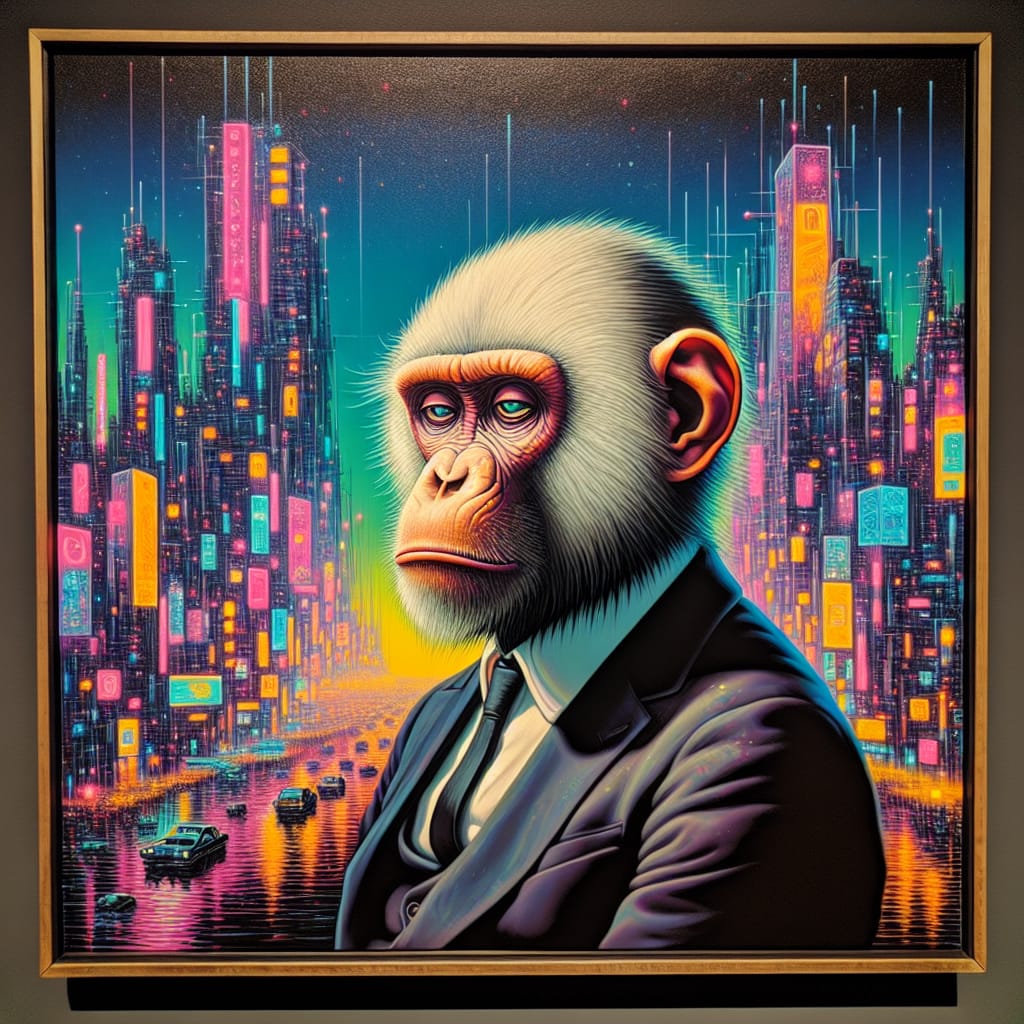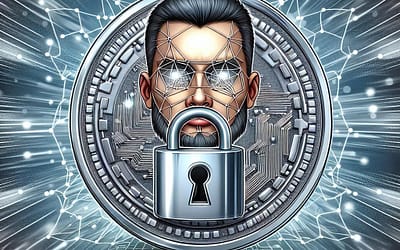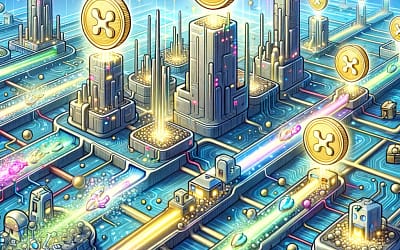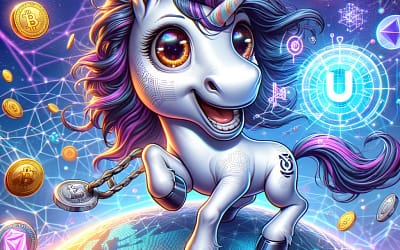Welcome to the unfolding digital panorama where artistry meets algorithm in a symphony of uniqueness and ownership. This is where non-fungible tokens (NFTs) come into play, a marvel of modern technology that continues to reshape the canvas of online expression and asset management. If you've been skimming the headlines or browsing the buzz in tech circles, chances are, you've encountered these three little letters: N-F-T. And if you find yourself scratching your head wondering what they stand for, fret not because you're about to embark on an explorative journey into the world of NFTs, an experience equally exciting for the ardent crypto enthusiast or the budding blockchain beginner.
What Are Non-Fungible Tokens?
The term 'non-fungible' might sound like jargon straight out of a high-finance textbook, but let's break it down with a simple analogy.
Imagine you have a dollar bill. You could exchange it for another dollar, and you'd still have the same value, right? That's because a dollar bill is 'fungible'—interchangeable and replaceable. Now, think of a one-of-a-kind painting by Van Gogh. There's nothing quite like it, and if you traded it for another painting, you'd have something completely different. This distinctiveness is the essence of 'non-fungible'—unique and irreplaceable.
Now, translate that concept to the digital realm. Essentially, a Non-Fungible Token is a digital certificate of authenticity and ownership for a unique item or piece of content, securely logged on the blockchain. These tokens can represent anything from a captivating digital artwork to a whimsical meme that captures the zeitgeist. They can be bought, sold, and collected, much like traditional art, but with the significant advantage of blockchain technology ensuring their authenticity and provenance.
Their story began in earnest in 2014, but NFTs vaulted into popular consciousness in 2021, with eye-watering sales such as Beeple's 'Everydays: The First 5000 Days' fetching millions at auction. Since then, the NFT market has exploded, capturing imaginations and wallets alike.
Let's delve deeper into what powers these digital assets.
- Blockchain: The Backbone of NFTs
Imagine a ledger, a bit like a communal diary, that meticulously records every transaction, every exchange, and every promise made between parties. Blockchain is the high-tech cousin of this diary, a distributed database that's both incredibly transparent and secure, thanks to its immutable(unchangeable) nature. Each 'block' in the chain contains a set of transactions that, once verified, is eternally etched in digital stone.
- Minting the Token
When an NFT is 'minted'—the process of turning a digital file into a marketable asset on the blockchain—it becomes part of this indelible ledger. These tokens are typically minted through smart contracts, self-executing contracts with the terms directly written into code. The result is a tamper-proof, unforgeable certificate of digital ownership.
- Digital Originality and Uniqueness
One might ask, if a digital file can be copied effortlessly, what's stopping anyone from duplicating the NFT? The key lies in the concept of 'digital scarcity.' While images or videos can be replicated, the NFT linked to the original file has a verified owner marked on the blockchain, rendering it the digital equivalent of a signed masterpiece.
Ironically, the technology born out of a desire for decentralization has orchestrated a thriving new marketplace that hinges on exclusivity and singular charm. Understanding its layers and capabilities is just the tip of the blockchain iceberg.
So, what does one actually do with these digital tokens of uniqueness? In the next section, we explore the multifaceted applications of NFTs across different domains, from digital art and gaming realms to innovative use cases mushrooming across various industries. Ready to see the practical magic of NFTs in action?
The Multifaceted Applications of NFTs
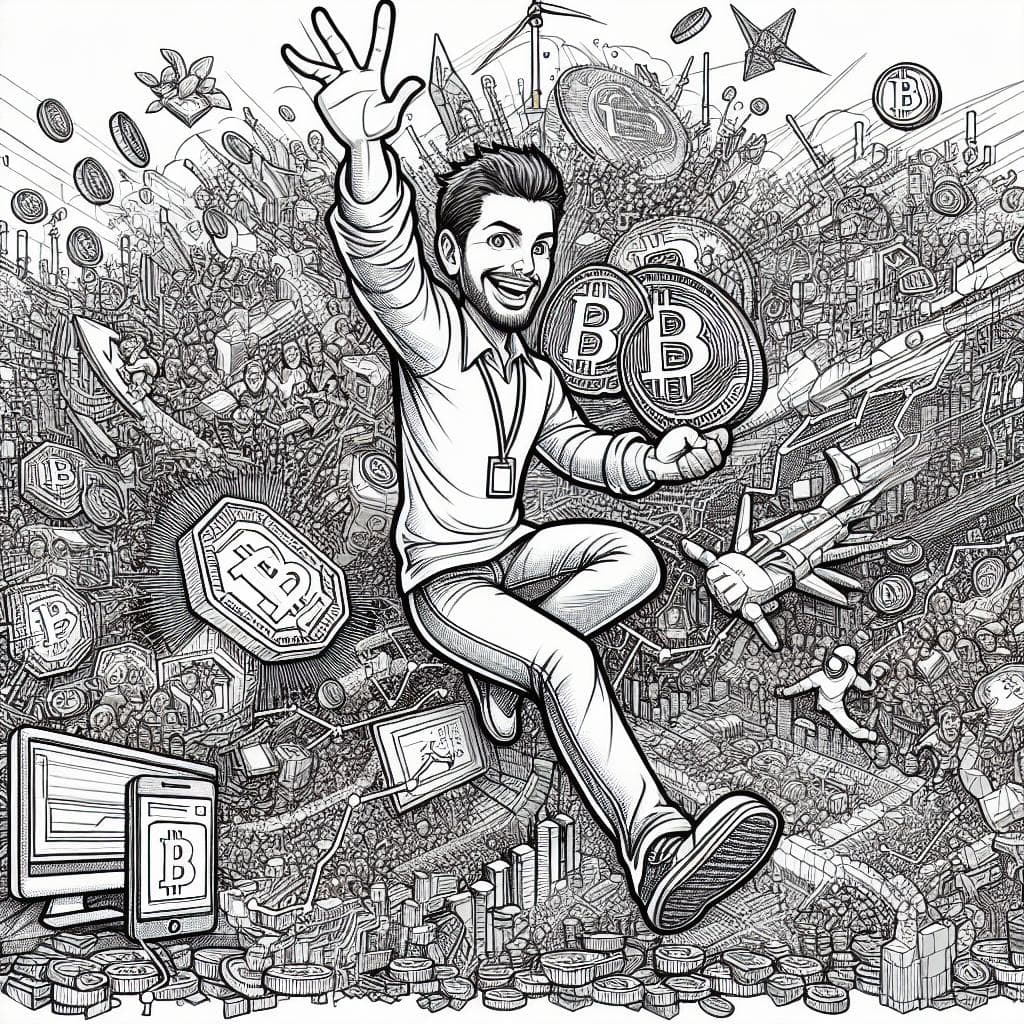
- Digital Art and Collectibles
The advent of NFTs has sparked a renaissance in the digital art scene, propelling creators and collectors into a new era of art commerce. Far from being confined to the traditional galleries, art has found a thriving marketplace in the virtual world, where NFTs serve as certificates of authenticity and ownership for digital masterpieces. The headline-grabbing sales of NFT artworks, such as Beeple's collage selling for $69 million, have not only made waves but have underscored the burgeoning value of digital collectibles. These assets are winning over enthusiasts with their uniqueness and promise of exclusivity.
- Gaming and Virtual Realities
The gaming industry has embraced NFTs with open arms, allowing players to own unique in-game assets that carry tangible value both within and outside of the game world. From epic swords with a storied past to rare skins that set players apart, in-game items have become coveted NFTs. Virtual real estate, too, is being snapped up across expansive metaverses, as users buy, sell, or develop digital land, each piece cryptographically unique. In gaming, NFTs have transformed from mere novelties to essential commodities that enhance the user experience and fuel in-game economies.
- Beyond Entertainment: NFTs in Various Industries
The potential of NFTs extends beyond the realms of digital art and gaming into numerous industries. The music industry is capitalizing on NFTs to tokenize songs and albums, providing a new revenue stream for artists and a deeper connection for fans. In the world of fashion, NFTs are revolutionizing the way we think about ownership and authenticity, with exclusive digital clothing and verified authentic goods. Meanwhile, in the sports sector, NFTs are transforming fan experiences, offering collectible highlights and engaging memorabilia that bear a unique digital signature.
As we observe the proliferation of NFTs across these diverse sectors, it's clear that these tokens of authenticity are not a fleeting trend but a versatile tool reshaping the landscape of ownership and value. But what does the horizon look like for these unique assets? In the next section, we will explore the implications of NFTs on intellectual property, confront their challenges and criticisms, and forecast their trajectory as we peer into the exciting innovations and the future impact of NFTs on the digital economy.
The Future and Impact of NFTs
- NFTs and Intellectual Property
Non-fungible tokens are redefining what it means to own intellectual property in the digital age. Through NFTs, artists and content creators are finding revolutionary ways to monetize their work while retaining more control over their intellectual property. Tokenization of digital assets allows creators to sell their work directly to consumers without intermediaries, often with embedded royalties that provide ongoing income from secondary sales. This has enabled a new model of content creation and rights management that empowers creators and challenges traditional media distribution methods.
- The Challenges and Criticisms of NFTs
Despite their potential, NFTs face their fair share of challenges and criticism. One of the most prominent issues is their environmental footprint, given that blockchain technology, particularly systems using 'proof of work,' can be energy-intensive. This has sparked discussions on sustainable practices and the adoption of more energy-efficient 'proof of stake' methods. Furthermore, the current legal framework around digital ownership and NFTs remains complex, presenting ethical questions and potential for misuse. The lingering concern over the so-called 'NFT bubble' has also led to skepticism regarding the long-term viability of these high-priced digital assets.
- What's Next for NFTs?
The horizon for NFTs appears boundless as innovators continue to explore fresh applications that extend beyond the arts and entertainment. We are witnessing the advent of NFTs in industries such as real estate, where they could potentially represent ownership of physical property, and in identity verification processes, offering secure and immutable records. Interest in NFTs as part of financial instruments, such as insurance or as collateral for loans, also signals an expanding future. As the dialogue around NFTs grows more nuanced, it becomes increasingly clear that they will be an integral component of the burgeoning digital economy.
In anticipation of these developments, the exploration of NFTs is far from over. Moving forward, we will be examining the intersection of NFTs with new technologies, dissecting their potential to influence various aspects of our digital and physical lives, and discussing the potential for a more secure, artist-friendly ecosystem. Our next blog post will pave the way to understanding how NFTs might continue to innovate and reshape various sectors, setting the stage for a digital renaissance fueled by cryptographic uniqueness and blockchain technology.
Matt is the founder of TechMalak. When he's not buried face-deep in the crypto charts you can find him tinkering with the latest tech gadgets and A. I tools. He's a crypto investor and entrepreneur. He uses a mixture of A.I and human thought and input into all his articles on TechMalak, further merging man with machine.

